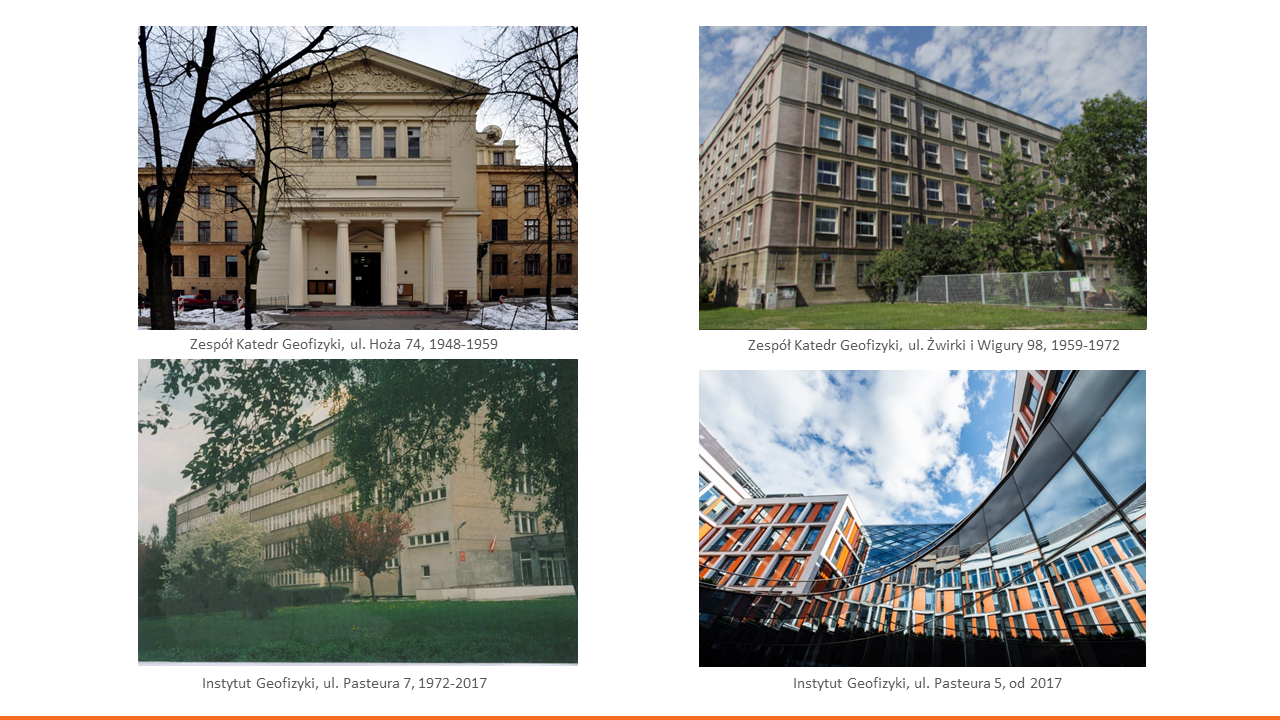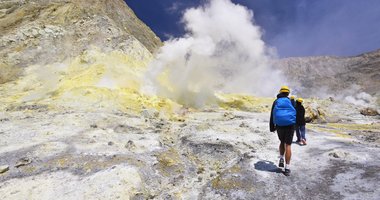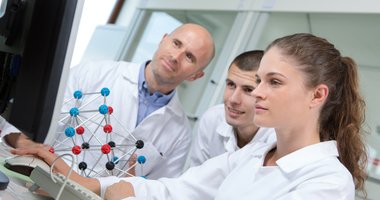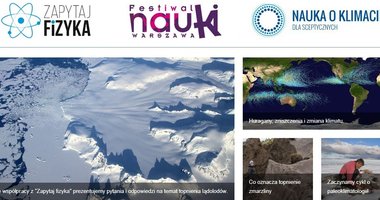
IGF History
From the Earth's core to stars: a brief history of the Institute of Geophysics FUW
In celebration of "100 years of Physics - from Hoża to Pasteur"
FIZYKOTEKA - a virtual museum of the UW Faculty of Physics
Difficult beginnings, the reconstruction period, the Geophysics Department at 74 Hoża Street and the Cold War
The beginnings of geophysics at the University of Warsaw are closely related to the beginnings of geophysics at the Polish Academy of Sciences and the general rebirth of scientific and research institutions in Poland after World War II. The vast majority of earlier scientific achievements and endeavours were lost. The start in 1945 was from absolute zero after the drastic destruction of the war. The birth of geophysics in the Warsaw scientific community, in those extremely difficult times, was greatly due to two monumental figures - Prof. Edward Stenz (1897-1956) and Prof. Teodor Kopcewicz (1910-1976).
These extremely energetic and prolific founding fathers undertook a great effort to establish at the University of Warsaw Geophysics Departments I and II in the years 1948-49, to reconstruct and expand geophysical stations and observatories in Poland and to restore and develop the pre-war scientific output. After the war, it was the organisers of the geophysical observatories, Teodor Kopcewicz, Irena Bóbr-Modrakowa, Tadeusz Olczak and Edward Stenz, who became lecturers in geophysics at the University of Warsaw. The first lectures started already in the academic year 1946/47, and the first eleven students, three of whom graduated with diplomas in geophysics, started their education in the academic year 1950/51.
The war significantly depleted the staff, infrastructure and library collections. The first headquarters of both departments were at 74 Hoża Street, in an annexe on the fourth floor. It was there that Professor Stenz organised the Department of Geophysics I. He imported measuring instruments and scientific journals from abroad. A large part of the book collection, which later became part of the library of the Institute of Geophysics FUW, consisted of books acquired by Prof. Stenz. At the same time, Professor Kopcewicz started the reconstruction of the pre-war station of the Department of Aerology of the State Meteorological Institute in Legionowo and resumed regular atmospheric soundings. Within the framework of the Department of Geophysics II he began to conduct lectures, exercises and seminars.
In 1952 the Department of Geophysics I was renamed the Lithosphere Physics Department under Prof. Stenz, while the Department of Geophysics II was renamed the Atmosphere Physics Department under Prof. Kopcewicz. Both departments were merged into the Department of Geophysics. In 1956, Prof. Dr Konstanty Tadeusz Olczak (1907-1983), his long-time co-worker and colleague from the Institute of Geophysics of the Polish Academy of Sciences, a researcher in the physics of the lithosphere, took over from the late Prof. Stenz. He was director of the Institute of Geophysics of the Polish Academy of Sciences in the years 1953-60 and head of the Department of Physics of the Lithosphere in the Group of Departments of Geophysics of the University of Warsaw in the years 1957-78, until his retirement in 1978.
The 1950s was a time of great post-war reconstruction and the beginning of the so-called Cold War. It was the time of the arms race between the United States and the USSR, the establishment of NATO and the European Coal and Steel Community in the democratic West, and the Warsaw Pact as well as the Council for Mutual Economic Assistance in the communist East. The time of the launch of the first artificial satellite of the Earth into space and the first human ascent of Mount Everest. For the Geophysics Department Team, it was a time of developing young and talented assistants under the watchful eye of the founding fathers. For political reasons, mutual visits, conferences and postdoctoral trips were limited and within the framework of belonging to either the Eastern Bloc or the Western Bloc. Personal exchange and international cooperation at the level of universities, institutes and departments were very limited, as in all other state institutions.
The first assistant employed in the Atmospheric Physics Department in 1954 was the later researcher in the physics of clouds and storm cells, the designer of fast thermometers for ground-based and airborne measurements, the pioneer of cooperation with the National Center of Atmospheric Research (NCAR) in the United States and the promoter of many Polish physicists of the atmosphere - Professor Krzysztof Haman (b. 1934). In turn, the first assistants in the Lithosphere Physics Department were Maria Mackiewiczówna, M.Sc. and later meritorious Professor Roman Teisseyre, PhD (born in 1929), a native of Lvov, a Warsaw insurgent, a researcher into the physics of the Earth's interior, affiliated with both the Institute of Geophysics of the University of Warsaw and the Institute of Geophysics of the Polish Academy of Sciences. In the following year, Professor Stenz employed Mieczysław Kozłowski and Andrzej Zawada as his assistants. The former, together with the then MA Krzysztof Haman, set up a geophysical station at Cha Pa.
Continue reading (PDF in Polish)




